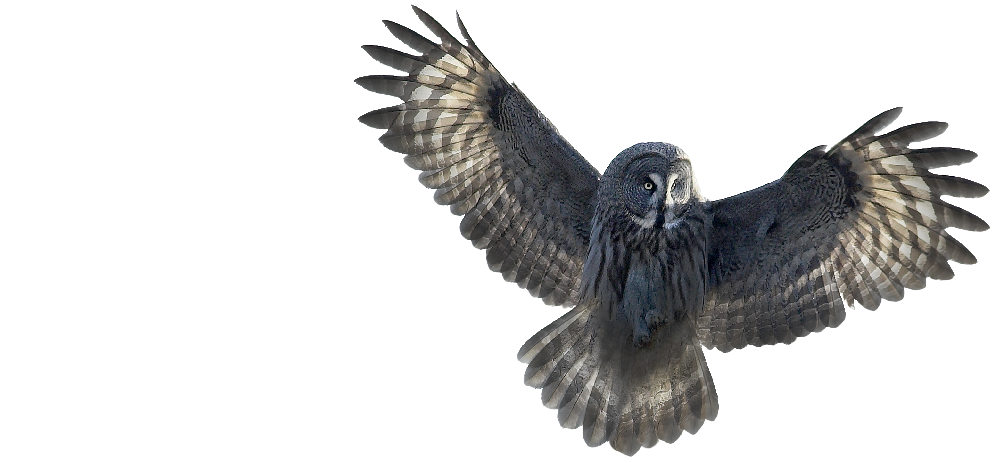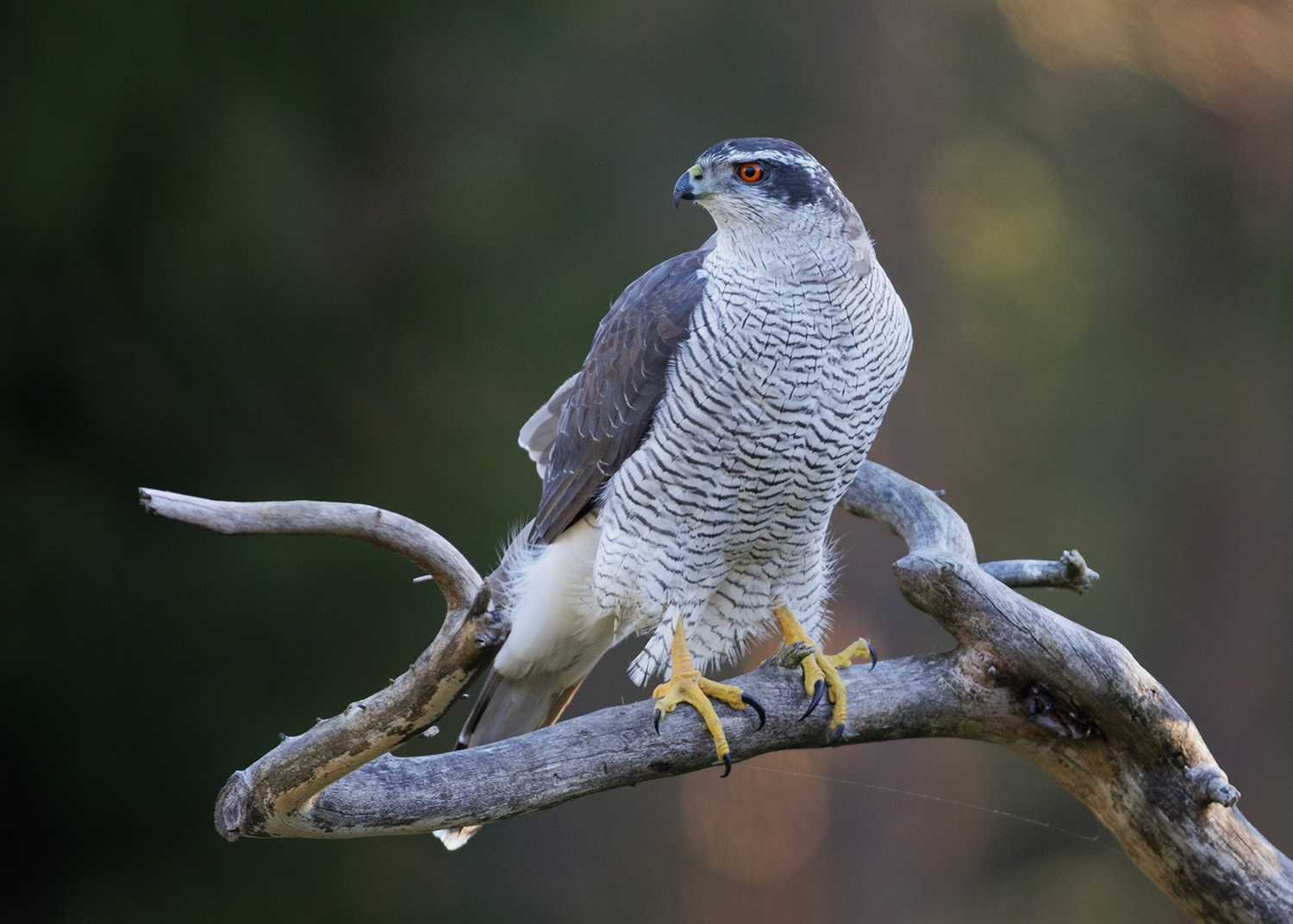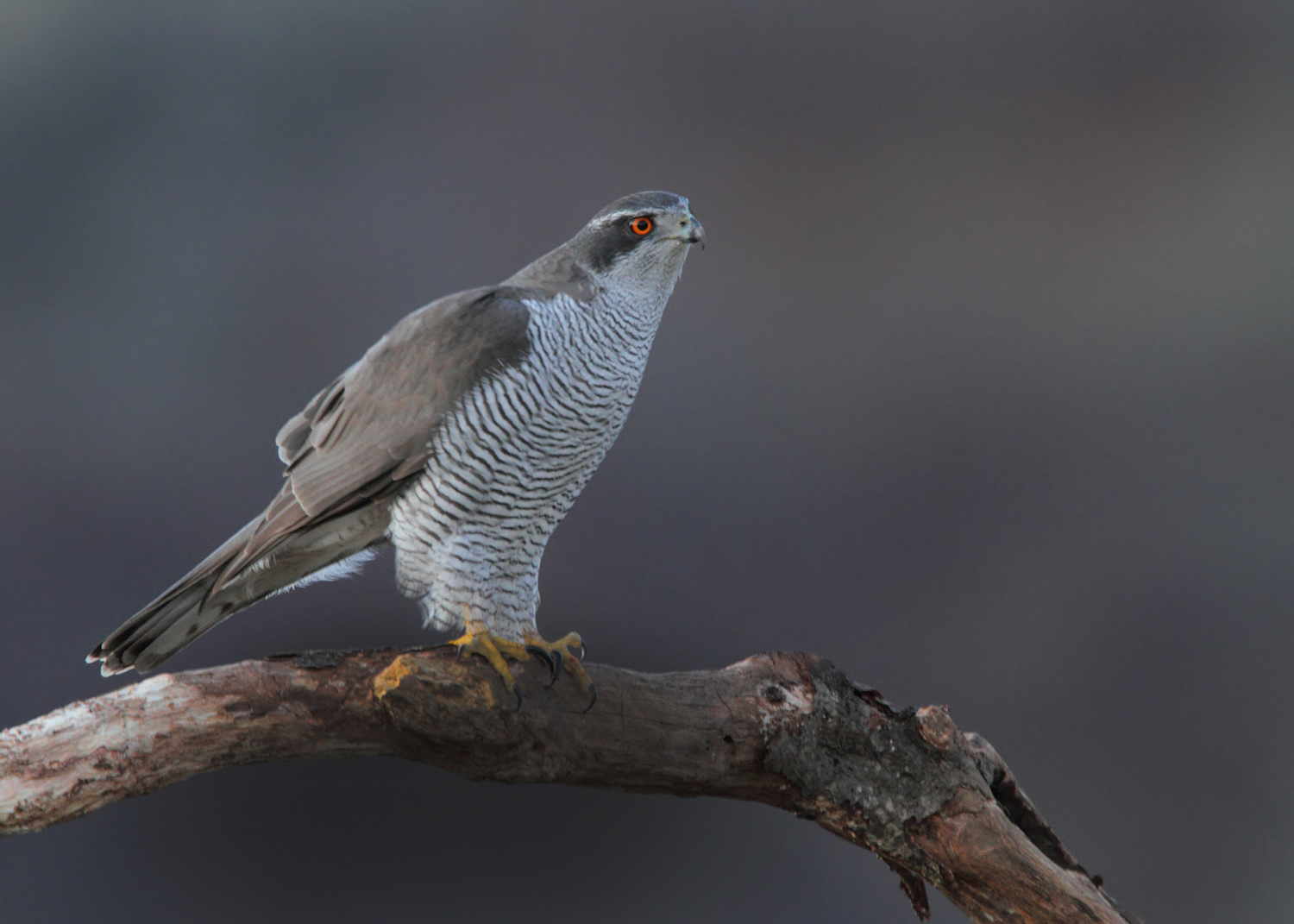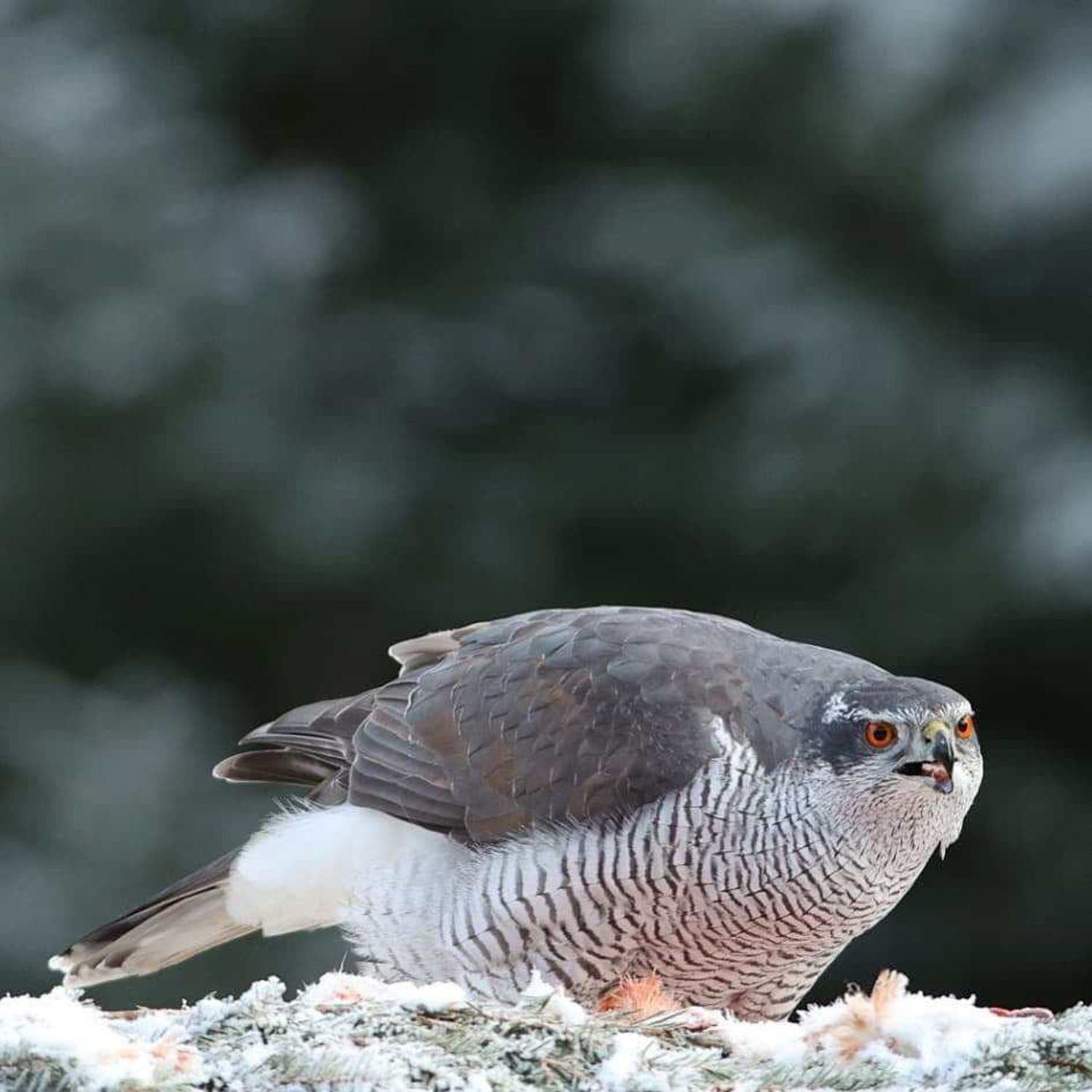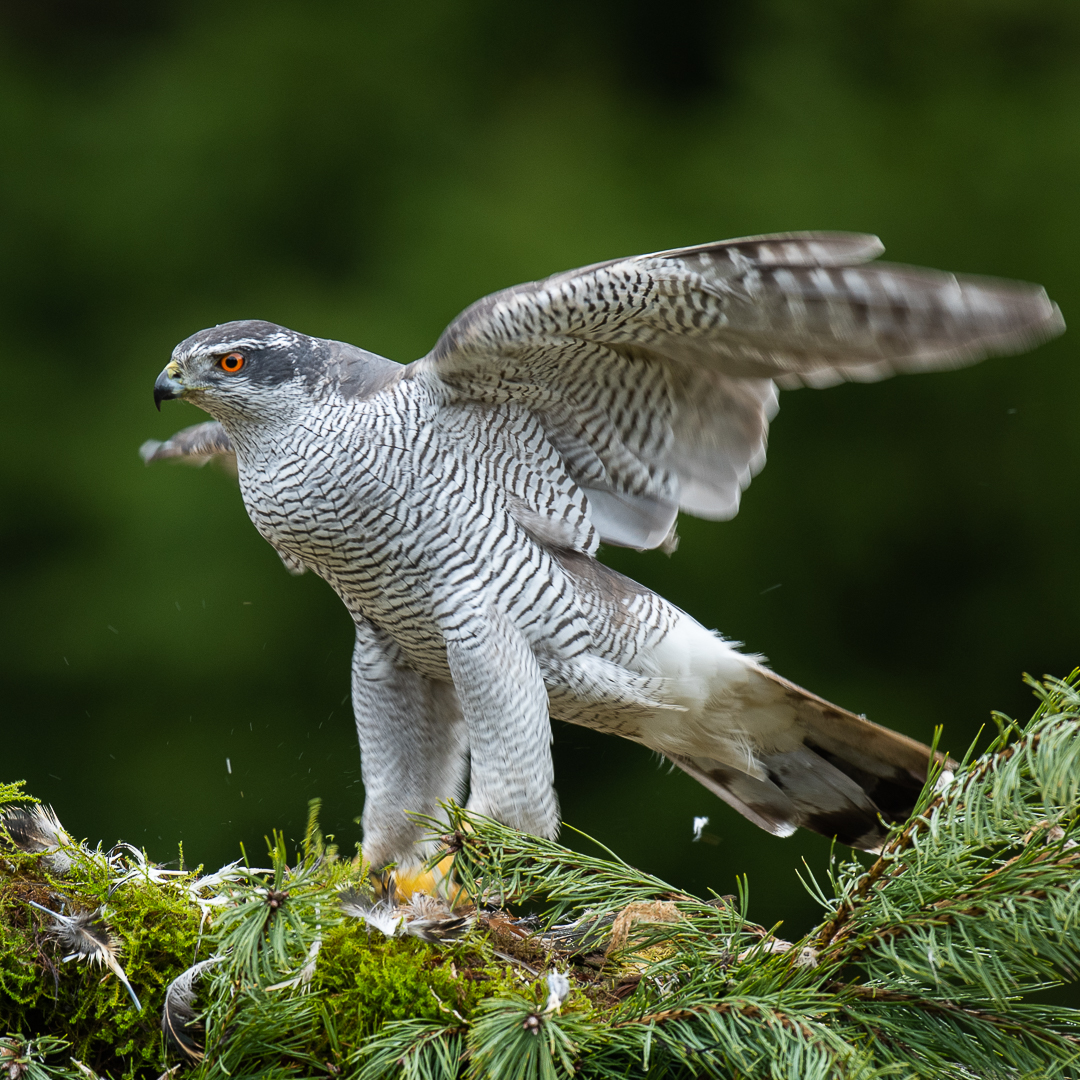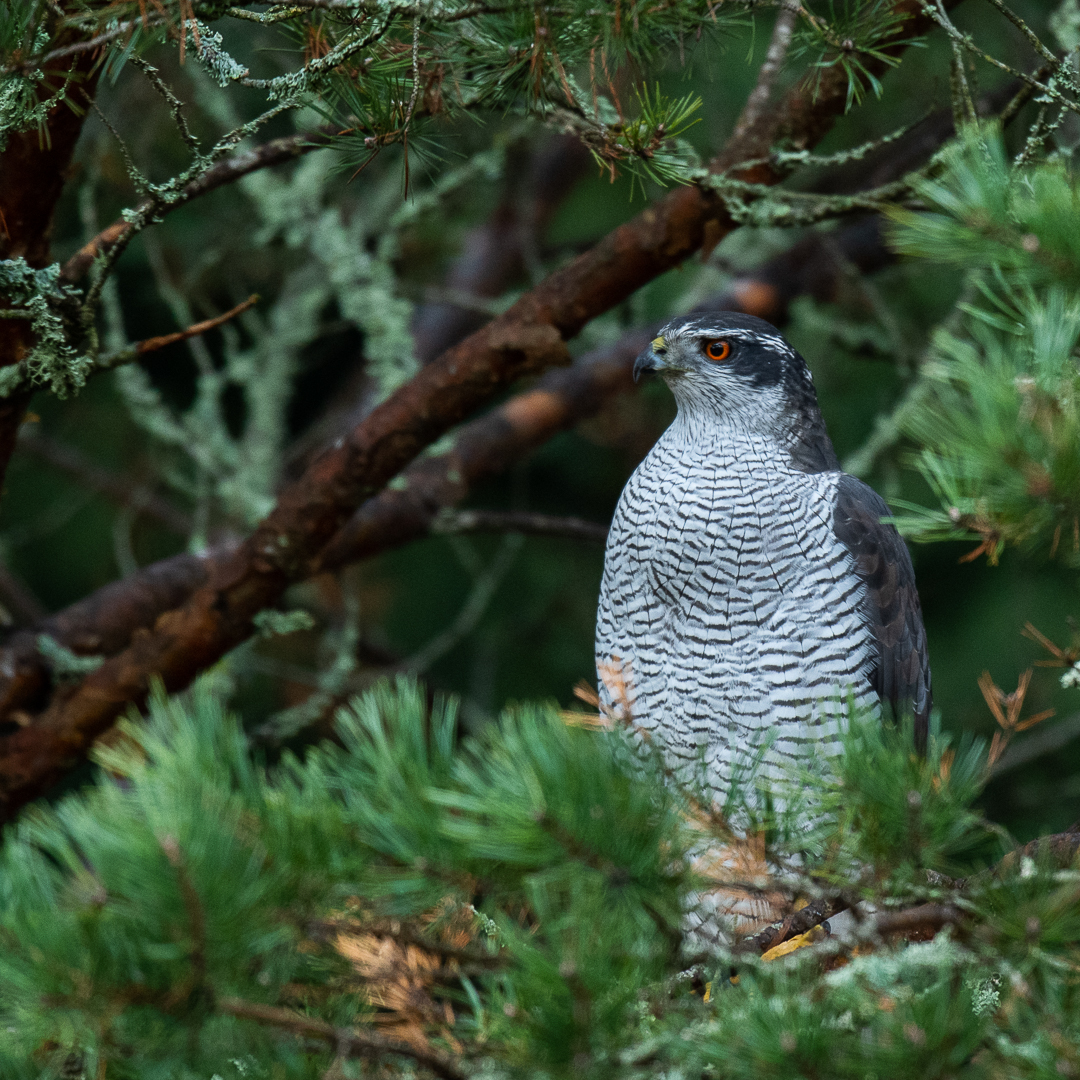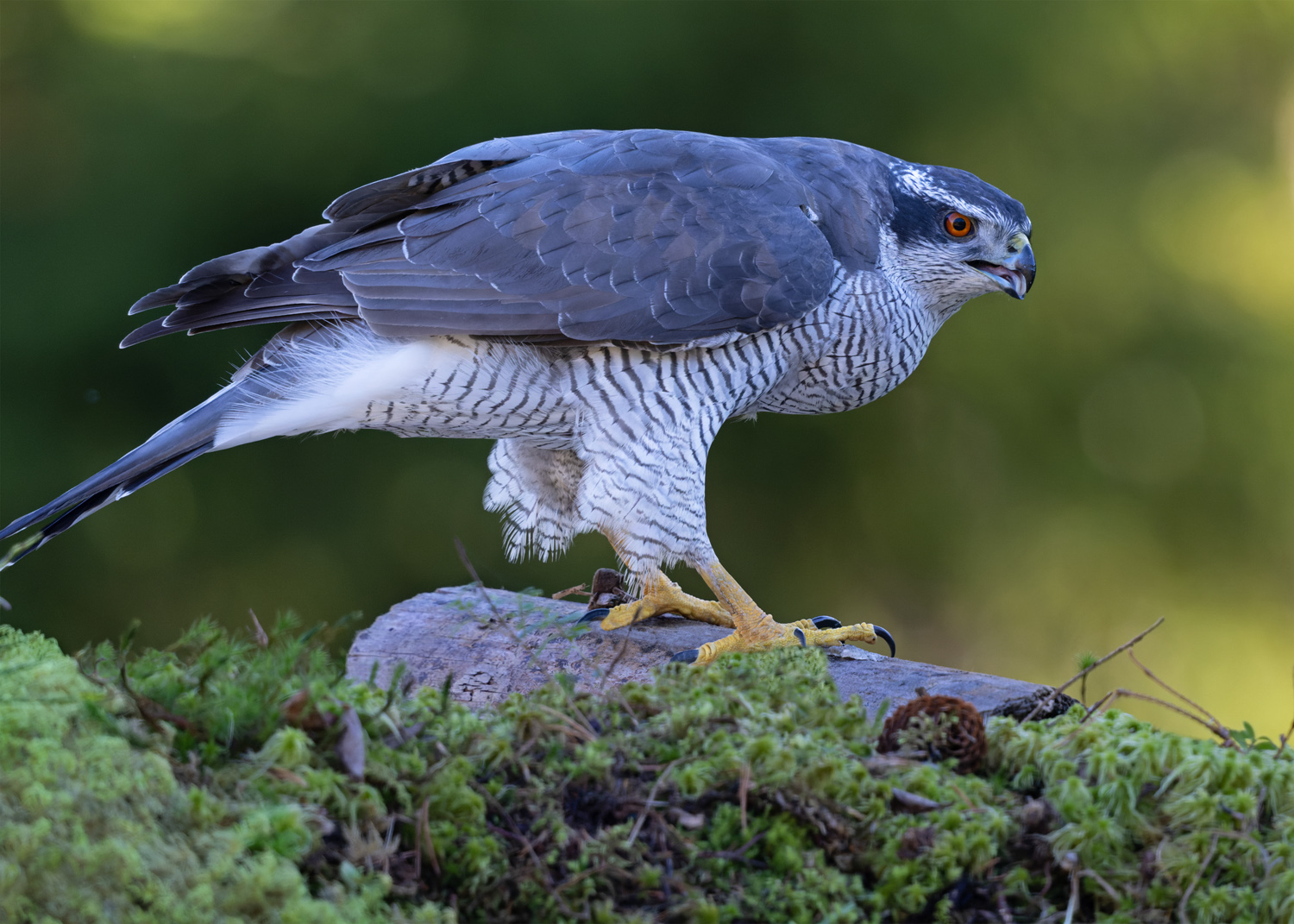Goshawk photography
September – April
Goshawk photography
September – April
When: September – April
Price: 2.750 SEK/ person
Northern Goshawk
Northern Goshawk photography
The Northern Goshawk (Accipiter gentilis) is not a rare bird in Sweden but a very shy raptor that is difficult to get close to. We have created a “Goshawk restaurant” where Goshawks come to feed on a regular basis. Here we have built a comfortable photo-hide where 3 persons can sit and study/ film or photograph the Goshawks from very close range. The adult Goshawk is a beautiful raptor with its finely barred, silver-white chest and dark, ash-grey upperparts. It is only 20 meters away from you and it is important that you move your camera very slowly as you take your first pictures. You´ve probably never been this close to a Goshawk before.
The hide stands in a little glade in the pine forest. It is within a Goshawk territory so the birds come to feed regularly. The Goshawks might not be quite as shy as an Eagle but it is still very important that you sit quietly and move soundless in the hide. The hide offers excellent photo-opportunities at very close range. We feed them on a platform so you get them in ”eye-height”, there are several perches for the Hawks next to the platform and within 20-30 meters from the hide, most of them rather low with a dark background. We feed the Goshawks natural prey like birds and small mammals. There is a bird bath on a built-up table in front of the hide, to attract birds during the non-frozen season. In wintertime we feed them birdseeds so you have a lively scene in front of you. Bullfinches, Willow Tits, Crested Tits and Yellowhammers are examples of passerines that appear.
The hide is well insulated to keep the cold outside and the heat in. There´s a soundless and odour-free gas heater that you light on arrival to get the hide warmed up. Despite minus 10-20° C outside in winter it easily gets +20 or more inside. You sit in comfortable easy arm-chairs with a soft sheep-skin-rug on. During quiet periods you can enjoy reading notes from previous visitors in the logbook.
Northern Goshawk photography
The Northern Goshawk (Accipiter gentilis) is not a rare bird in Sweden but a very shy raptor that is difficult to get close to. We have created a “Goshawk restaurant” where Goshawks come to feed on a regular basis. Here we have built a comfortable photo-hide where 3 persons can sit and study/ film or photograph the Goshawks from very close range. The adult Goshawk is a beautiful raptor with its finely barred, silver-white chest and dark, ash-grey upperparts. It is only 20 meters away from you and it is important that you move your camera very slowly as you take your first pictures. You´ve probably never been this close to a Goshawk before.
The hide stands in a little glade in the pine forest. It is within a Goshawk territory so the birds come to feed regularly. The Goshawks might not be quite as shy as an Eagle but it is still very important that you sit quietly and move soundless in the hide. The hide offers excellent photo-opportunities at very close range. We feed them on a platform so you get them in ”eye-height”, there are several perches for the Hawks next to the platform and within 20-30 meters from the hide, most of them rather low with a dark background. We feed the Goshawks natural prey like birds and small mammals. There is a bird bath on a built-up table in front of the hide, to attract birds during the non-frozen season. In wintertime we feed them birdseeds so you have a lively scene in front of you. Bullfinches, Willow Tits, Crested Tits and Yellowhammers are examples of passerines that appear.
The hide is well insulated to keep the cold outside and the heat in. There´s a soundless and odour-free gas heater that you light on arrival to get the hide warmed up. Despite minus 10-20° C outside in winter it easily gets +20 or more inside. You sit in comfortable easy arm-chairs with a soft sheep-skin-rug on. During quiet periods you can enjoy reading notes from previous visitors in the logbook.
The adult Goshawk is a beautiful bird with finely barred, silver-gray underparts and dark graphite-gray back. You’ve never been this close to a Goshawk before.
The adult Goshawk is a beautiful bird with finely barred, silver-gray underparts and dark graphite-gray back. You’ve never been this close to a Goshawk before.
Comfortable hides on nature’s terms!
We are constantly working on developing our hides based on comfort and photographic opportunities. When you sit in our hides, you can be sure that:

